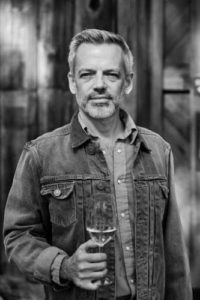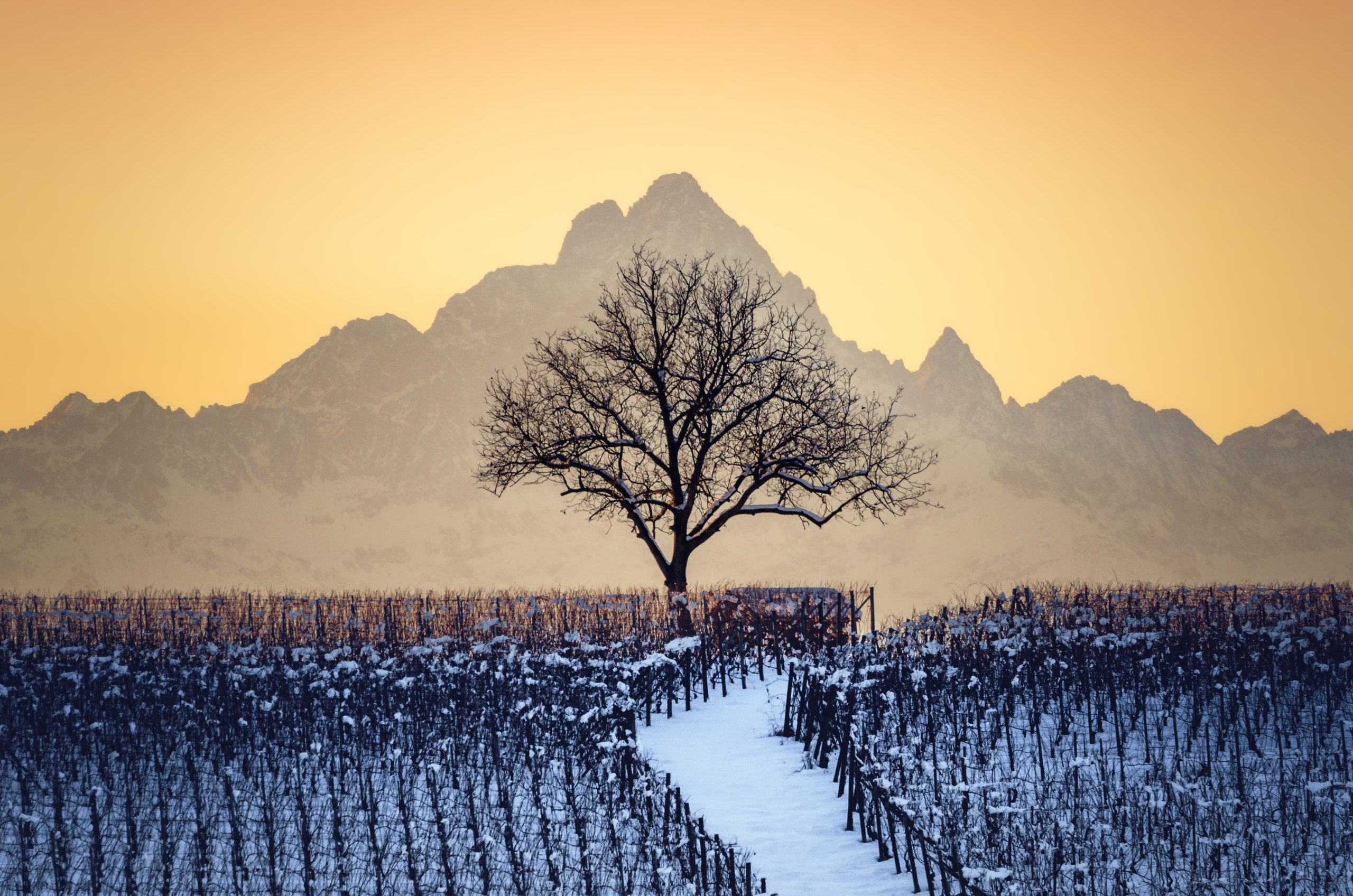Get ready for your crash-course in winter-time grape-growing. Cameron Hughes’ Zeke Neeley talks through winter dormancy, springtime threats to young vines, and offers predictions on the winter growing season ahead.
By CH Wine Team
Zeke Neeley, the senior winemaker at Kunde Family, one of the shining gems in the Vintage Wine Estates portfolio, is also one of the winemakers at the helm of the Cameron Hughes winemaking team. Joining Neeley in the cellars, and on the hunt for exceptional wines from California to Tuscany, are Mike Lawrence and Marco DiGuilio.
We recently spoke with Neeley about what’s going on in the vineyards right now, during the first months of the year. Neeley is either always in a vineyard, in a winery, or traveling to a vineyard or winery, so it was luck that we caught him.
A graduate of UC Davis with a degree in biochemistry, Neeley first worked in cancer research for a biotech firm in South San Francisco. Every vacation, he would end up in wine country. And he started to realize that winemaking was like food science and being a chef—two things he loves. Neeley decided to pursue a path in wine, and went back to Davis to earn a Master’s degree in Viticulture and Enology. He completed his degree in 2003, and worked his first harvest internship that year at Trefethen Vineyards.
Neeley landed his first full-time wine job working in the lab for Randall Grahm at Bonny Doon, then took an enologist position at Schug in Sonoma. Then, in 2008, he got a call from Trefethen to join up as their assistant winemaker, and as luck would have it, the winemaker changed jobs and Neeley was promoted within a couple of months to winemaker. He stayed at Trefethen until 2015, then worked two vintages for Dave Phinney at Orin Swift Cellars, and in 2016, after Orin Swift sold to Gallo, he joined Kenwood Vineyards. Neeley served as Kenwood’s winemaker until 2022 when he joined Kunde.

Zeke Neeley
Winemaker
One of the shining gems in the Vintage Wine Estates portfolio, is also one of the winemakers at the helm of the Cameron Hughes winemaking team. Neeley is always on the hunt for exceptional wines from California to Tuscany
Q: Zeke, tell us about what is happening in the vineyards during the months of January to March? Is this considered the dormancy period?
Zeke Neeley (ZN): Yes, currently, everything is dormant and what that means is you don’t see any green growth, except for grass growing and mustard flowers between the vines. What the vines are doing is replenishing their stores—sort of like hibernating, and roots are gathering nutrients. But in the absence of green growth there is now photosynthesis happening. With climate change we are getting earlier and earlier bud-break—the first signs of green growth. It used to happen at the end of March, but occasionally we start seeing this happening in February now. It’s not a bad thing, but in February, you can still get frost.
The other thing we are doing is pruning. You want to do this before any green growth, otherwise, you could knock the new growth right off. And pruning leaves wounds, which are susceptible to mold and mildew, and Eutypa, which is a fungus. If it rains after a wound, you have a real chance for disease. We are pruning now after all the heavy rains while we have sun. You can till the pruning into the soil for compost, or you can wood chip it.
Q: Springtime frosts can be a real issue for new vine growth. How do you mitigate those threats?
ZN: Ice can form within the green soft tissue and kill that part of the vines. But the wood is fine. But a green leaf is susceptible to 32 degrees. In the old days, they used these smudge pots, put Diesel Fuel in them, and light it, and let it burn. It keeps things warm enough and since there’s no fruit on the vines so there are no smoke taint issues. But those are eyesores, and they create air pollutants. We use more environmentally friendly ideas. Sprinklers, for instance—as long as fresh water is landing constantly, as it freezes, it briefly warms up (an exothermic reaction), so if constantly adding new water on the vines it never gets below 32 degrees—but the sprinklers have to run constantly until the air is warm enough to turn them up. Obviously, this isn’t good for drought-stricken areas.
Another practice is using wind machines, which move warm air over the top of cool air and that keeps the vines from ever getting too cold. Just 15 feet above us, the air is warmer than what’s on the floor. But, the easiest mitigation is to plant on a hillside. This goes back to fluid dynamics. Cold air is heavier than warm air, and cold air on a hill just flows down to the valley floor… and it leaves the warm air on the hillsides.
Q: Often in winter, huge piles of vines are amassed in certain sites. What’s going on there?
ZN: Vines can last a long time as long as they are disease free, but as they get older, they lose energy and are less efficient, and you reach a point where the vineyard doesn’t produce enough fruit to make it financially viable anymore. If you planted Merlot in the 1990s, and the movie Sideways came along, you wanted to rip out the Merlot (not anymore!) The easiest time to take out vines is before they start growing again.
You also want to give the ground time to go fallow, and rejuvenate itself. Growers will plant legumes and mustard flowers. For legumes, wait for the peas to form, then mow them and till all those nutrients back into the soil. And keeping it fallow, there are vine diseases that live in the soil when a vineyard is planted, but once you remove the vines those little disease-carrying-critters start to go away. If you’re fallow for a year and a half, it’s the most natural process for removing pest pressure.
Q: Looking ahead to warmer days, when you see bud-break what is the next phase of farming?
ZN: This year, we are anticipating a very decent crop because the ground has more than enough moisture. So if you’re thinking about a big crop, you have to ask how many clusters do you want to leave on the vine. So you have to start thinking about cutting back the green growth. Grape vines are over-enthusiastic, so you have to mitigate their enthusiasm. As the season progresses, you’re thinking about airflow and canopy management to make sure you get that dappled sunlight and not direct. People don’t want to be in full sun or full shade, like when you’re on vacation—you want to be in the Cabana—and that’s the canopy idea.
Q: Have you heard any oft-repeated grape farming myths you’d like to dispel?
ZN: The idea that lower crop levels equal higher quality. It’s an idea that comes from the 1970s when they would crop everything. If everything is at 8 tons an acre and they have a year at 4 tons per acre, then they extrapolated the wrong answer. You can do 8 tons per acre if you have that dappled sunlight. If you can create that microclimate, the tonnage doesn’t matter. In some years, like 2018, we had excellent quality because the farming was great. Think of old vines. They are naturally less vigorous, and they make fewer leaves each year, creating a naturally dappled canopy. People love old vines because you get to be a lazy farmer—the vine is doing all the work.

